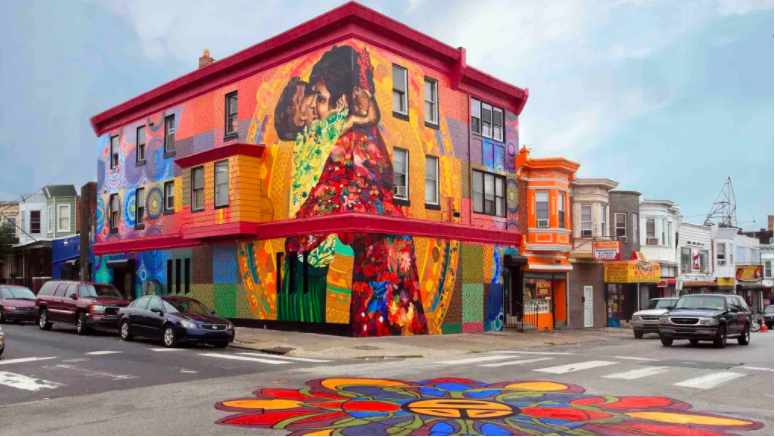
“It kills us.” Philly’s Latinx artists cope with lost incomes and voices amid arts and culture cuts
Mayor Jim Kenney’s revised COVID-19 budget gutted the city’s funding to arts and culture and did away with the Office of Arts, Culture and Creative Economy.
When Gabriela Sanchez of Power Street Theatre Company first heard about the cuts in Philadelphia Mayor Jim Kenney’s new revised coronavirus budget to arts and culture, she got emotional.
One of the programs being cut along with the entire Office of Arts, Culture and the Creative Economy is the Philadelphia Cultural Fund, which dished approximately $3 million in funding to a record 349 organizations in 2019.
That’s the most organizations it’s ever given out money to in its 25-year history.
The fund provided the first grant Power Street Theatre Company ever got for its work.
“I remember it being the hardest thing I’ve ever done,” said Sanchez.
At the time, Power Street was to be a new rare theater outlet for members of the community in North Philadelphia. Sanchez and fellow Latina theater student, Erlina Ortiz, started the company out of frustration with the lack of representation in the theater industry of anything not white or male.
But like other small organizations, they needed a boost to get their footing in a world that was against them from the outset. That’s where funding from the Cultural Fund came in.
“They were the first believers in us and gave us the opportunity,” said Sanchez.
Power Street’s journey of starting with funding from the city is not unique for companies and organizations like it in Philadelphia that serve communities often without a voice in mainstream art and other fields.
That’s not to say big art institutions in the city aren’t also taking hits. For example, the Philadelphia Museum of Art also had its city funding reduced in the revised budget to just over $2 million from approximately $2.45 million.
“Everyone is going to have to make sacrifices and we’re all going to have to bear the burden of pain of the financial crisis,” said David Acosta, founder of GALAEI and Casa de Duende.
However, he said the bigger organizations often have the support base to weather the storm. It’s the smaller organizations that will bear the brunt of the crisis.
“We’re going to see the decimation and the closing of a lot of some of the smaller cultural institutions that make the arts so diverse in Philadelphia,” said Acosta.
Since the cuts were announced on May 1, he’s said he’s heard from many smaller arts organizations around the city with budgets from $60,000 to $150,000 “that may not be around next year.”
“Once the smaller organizations close, they’re closed. They’re not coming back,” he said.
Sanchez said it’s also not a coincidence that many of these smaller organizations are like hers and serve predominantly communities of color.
“It’s just a given that with the cut in funding, it’s going to affect a lot of people of color,” she said.
In fiscal year 2020, the Office of Arts, Culture and Creative Economy's Neighborhood Arts Programming supported 488 minority-identifying artists, according to a spokesperson for the city. Of those that were Latinx, included the annual Fería del Barrio and the Día de los Muertos celebration at the Fleisher Art Memorial to name a few. The Art in City Hall program — another run out of the Office of Arts, Culture, and the Creative Economy — also saw 34% of its artists identify as minorities, 15% of which were Latinx.
What happens when a city’s art scene loses its branches into diverse communities?
“We lose the plurality of vision,” said Acosta.
In other words, there’s a loss of representation in the arts for large swaths of people in the city.
Daniel de Jesús, a musician and the Youth Artist Program Manager at Taller Puertorriqueño, called it the “nucleus” of many of the city’s smaller community arts organizations.
“Why were they started in the first place? They were started because of a lack of representation of that specific community,” he said.
Acosta pinpointed a “hunger to see ourselves reflected in the arts and the creation of arts.”
It’s a message that extends beyond the Latinx art community to the African-American, Asian-American and LGBTQ arts scenes of Philadelphia to name just a few.
For de Jesús, it goes further at Taller. The organization was founded on the same principle of wanting a voice for Puerto Rican and overall Latinx art and culture in the city. However, it’s outgrown its initial mission and now serves in many ways like a community center for its surrounding residents in Kensington, Fairhill and all of North Philadelphia.
De Jesús points to Taller serving as a meeting place for members of the community protesting Puerto Rico’s government in the days of #RickyLeaks in tandem with the Providence Center, which sits just down the street.
Taller has also been a meeting place for voting drives, registering people in the surrounding community, and hosts a Thanksgiving dinner every year for the homeless.
“Their presence creates a glue for a lot of these communities through arts and culture,” said de Jesús.
Power Street Theatre Company has done similar support work for their community since the coronavirus outbreak. Using some of their costume materials, they’ve created protective masks and given them to members of the community.
When she spoke with AL DÍA, Sánchez said she was in the process of applying for grant money to continue the work.
Betsy Casañas, a painter, muralist and founder of the Semilla Arts Initiative in the same Norris Square neighborhood as Power Street said the little thriving arts communities of the city like hers are what “make Philadelphia what it is.”
The cuts, she said, will change everything.
“It kills us. It changes who we are,” said Casañas.
She first heard about the cuts almost a week after they happened, while quarantining in Puerto Rico. Casañas has lived back and forth between Philadelphia and the island since November.
As an artist who specializes in public art, the coronavirus pandemic had already taken a massive toll on Casañas’ potential income.
She’s not only had to cancel her annual alternative spring breaks, in which college students from all over the country stay at her house and conduct community service and create public art, but her potential income from renting her house as an Airbnb has also been halted.
Beyond the recent unemployment benefits announced for Pennsylvania’s gig and freelance workers, Casañas was blunt about her situation.
“We have nothing to stand on right now,” she said.
The cuts to the city’s arts and culture only compound the already bad situation.
For the time being, Casañas is researching for alternative sources of funding and trying her hand at graphic design.
De Jesús also saw a lot of his supplemental income from gigs and performances vanish with coronavirus in town. He still gets something from Taller, but admitted he has to “completely reconstruct" his budget.
To offset some of the concern, he’s using his time in quarantine to create and spread more of his own work.
RELATED CONTENT
In addition to providing music for a new, virtual theatre project called Teatro Quarantine, de Jesús has also done a series of web concerts and created some live recordings set to be released in June.
“It’s been a time to just really engage in making,” he said.
Coronavirus also canceled the opening of Power Street’s Kiss of Addixion show set to premiere at Teatro Esperanza on April 3.
Instead, the company hosted a virtual story circle about health injustice and health inequality — two themes of the play that centers around the opioid crisis in the surrounding community.
About 30 people attended the virtual gathering from around the country and introduced Power Street’s founders to the potential of a new reality through the web.
“We’re able to reach a new audience that we have never reached,” said Sanchez.
However, she admitted it’s difficult not engaging as many members of the surrounding community in the new setting.
“Abuela and tio and señor from the corner store are not on this call,” she said. “That’s hard.”
Still, Sanchez’s message is largely one of hope for Philadelphia’s Latinx and at-large art community.
In a recent conversation with her fellow Power Street cofounder, Erlina Ortiz, both recalled the time before they applied for that first grant from the Philadelphia Cultural Fund.
Then, like now, was a time of chaos with little or no budget.
“We know how to make something out of nothing,” said Ortiz. “We’ve done our work with no money. We’ve done our work with little to nothing.”
De Jesús called the story of artists scrambling under budget cuts “old,” while Acosta lamented “it’s always the arts that is first on the chopping block.”
The story then becomes one of resilience, much like the stories of the communities in which these arts institutions and artists live.
Casañas admitted coronavirus is “a whole other thing” to survive, but also ended on a hopeful note for the city’s artists.
“If anyone can survive this,” she said, “we can.”
But that’s not to say Philly’s Latinx and other artists aren’t fighting against the Mayor’s decision.
The Philadelphia Cultural Alliance has started a page on its website advocating for its supporters to send messages to their councilmembers to preserve the Cultural Fund in the revised 2021 budget.
Another change petition, started by iradiophilly has over 12,000 signatures to save the Office of Arts, Culture and the Creative Economy.
More than 100 members of Philadelphia’s theatre community have also signed a letter urging members of Philadelphia’s City Council to reject the cuts made to arts and culture.
In past years, Philadelphia’s arts and culture scene has contributed more than $4 billion to the city’s economy.
According to a spokesperson from the city, there is no replacement funding for the initiatives being cut, but some staff members from the Office of Arts, Culture and the Creative Economy will transition to being on the staff at the Managing Director's Office.
"These staff members will continue to play an influential role in leading, leveraging and coordinating Philadelphia's tremendous cultural resources that will be needed as part of the city’s economic recovery," they said.

This article is part of Broke in Philly, a collaborative reporting project among more than 20 news organizations, focused on economic mobility in Philadelphia. Read all of our reporting at brokeinphilly.org.











LEAVE A COMMENT:
Join the discussion! Leave a comment.